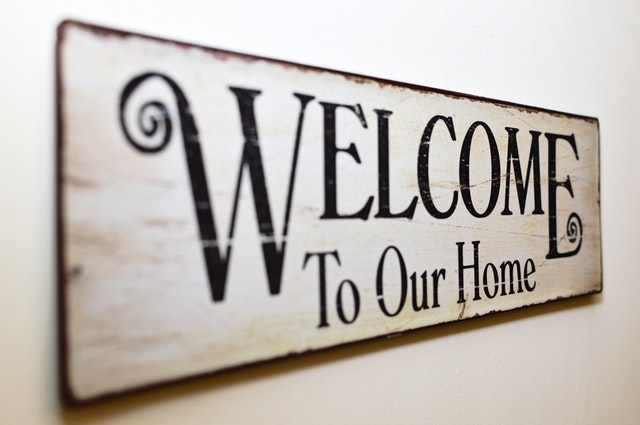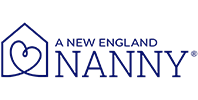
While the Capital Region is not quite ready to reopen, signs are pointing to it happening soon, and a new normal will begin. If the stay-at-home order and self-quarantine practices have caused you to lay off your nanny or stop using temporary ones, you may want to bring a nanny back to your home soon. Our partner GTM Payroll Services has this helpful guide for creating a return to work plan for your nanny.
The coronavirus (COVID-19) pandemic has interrupted many households across the country. While it’s unclear how long COVID-19 will continue to affect families, many household employers are looking to the future of their nannies and other workers returning to their jobs. Parents, too, may be planning returns to their offices outside of their homes as the economy gradually re-opens and stay-at-home orders are lifted. This will increase the need for childcare and nannies making their way back into the workforce.
Echoing the sentiments of public health officials, a return to normalcy won’t be like flipping a switch, but rather a gradual effort. In preparation for reopening your home and asking employees to come back to work, it’s imperative that you thoughtfully construct a return to work plan for your employee to keep everyone healthy and safe following the COVID-19 pandemic.
Also, review our frequently asked questions on employing household workers before and after the COVID-19 pandemic.
This article should be used for informational purposes only and should not supersede any applicable state or local guidance.
An introduction to return to work plans
A return to work plan is typically created to help reintegrate employees in the traditional workforce who have been injured or have been on leave. With the current health crisis, it may make sense for household employers to also have a return to work plan for their employees whether you’re welcoming back a worker who was temporarily let go during the pandemic or welcoming a new employee. Your plan’s purpose is to formalize steps for a safe and quick return to work.
There are many benefits of return to work plans for both you and your employee. Families can enjoy increased employee engagement, reduced turnover, better communication and improved morale with an established return to work plan. And it’s been proven in the traditional workforce that employees who go through return to work plans are able to get back to work quicker than those who don’t.
Your employee will also benefit from a return to work plan, as they feel better supported by you, which increases their engagement and loyalty to your family. Going through a return to work plan also helps them get back to work faster and increases the likelihood that they feel secure and stable in their role.
The benefits of return to work plans are undeniable. While these plans are typically customized on an individual basis, you can use the basics of a return to work plan to build your family’s approach to asking employees to return to work following the COVID-19 pandemic.
COVID-19 return to work plans
COVID-19 has caused many families to lay off their household workers, even if for a temporary basis, or reduce their hours, disrupting daily life for many. As stay-at-home regulations are scaled back and businesses are allowed to resume as normal, you may ask your employee to come back to your home. While they may not be coming back from an injury or leave, you need to have a plan in place for your employee to safely and successfully return to work. Having a plan in place can help you safely “reopen” your home.
Your COVID-19 return to work plan should include the following:
Anticipated return to work date
With the uncertainty that COVID-19 has brought, it’s important to give clear information and dates when your employee is to return to work whenever possible. Be sure to be flexible with your dates, though, as local and state orders are frequently updated.
Disinfecting and cleaning measures
Because COVID-19 can remain on surfaces long after they’ve been touched, it’s important that your home is frequently cleaned and disinfected. Some best practices include:
- Cleaning and disinfecting all frequently touched surfaces in the home, such as toys, remote controls, kitchen counters, bathrooms, telephones, handrails, and doorknobs
- Discouraging your employees from using outside toys or equipment unless they can be cleaned and disinfected before and after use
- Providing disposable wipes so that commonly used surfaces can be wiped down by your employee before each use.
Social distancing protocol
Social distancing is the practice of deliberately increasing the physical space between people to avoid spreading illness. In terms of COVID-19, social distancing best practices for your employee can include:
- Avoiding gatherings of 10 or more people (playgrounds, libraries, etc.)
- Instructing your employee to maintain at least 6 feet of distance from other people
- Limiting the number of people in your home (repair and/or maintenance workers, other family members, etc.)
- Discouraging your employee from shaking hands
Employee screening procedures
To keep employees safe, consider conducting screening procedures to identify a potentially ill worker before they enter your home. The Equal Employment Opportunity Commission permits employers to measure a worker’s body temperatures before allowing them to enter a worksite (in your case, the worksite is your home). Any employee screening should be implemented on a nondiscriminatory basis, and all information gleaned should be treated as confidential medical information. Be sure to notify your employee that you will be screening them to avoid any surprises.
Employee safety training
Your return to work plan should include detailed safety training guidelines to ensure that your employee understands how they can prevent the spread of COVID-19. Your plan should discuss the following safety training topics:
Respiratory etiquette and hand hygiene
Encourage good hygiene to prevent the spread of COVID-19. This can involve:
- Providing tissues and no-touch disposal receptacles
- Encourage frequent use of soap and water to wash hands
- Placing hand sanitizers in multiple locations throughout the home to encourage hand hygiene
- Reminding your employee to not touch their eyes, nose or mouth
Personal protective equipment (PPE)
PPE is equipment worn by individuals to reduce exposure to a hazard, in this case, COVID-19. Train your employee on proper PPE best practices. They should understand how to properly put on, take off and care for PPE like face masks and gloves.
Staying home when sick
Encourage your employee to err on the side of caution if they’re not feeling well and stay home when they’re sick or are exhibiting common symptoms of COVID-19 (e.g., fever, cough or shortness of breath). It may be an inconvenience to have your nanny call in sick, but considering the ramifications if they come into your home while infected, it’s better to be safe. You could consider increasing the amount of paid sick time in your nanny contract or work agreement so your nanny feels comfortable taking time off when they’re sick and not coming into your home when ill.
Mental health considerations
The COVID-19 pandemic has increased stress levels of employees across the country. It’s important that your return to work plan includes guidance for managing employee mental health concerns when they return to work.
Process for individualized requests
Your employee will be returning to work and facing different situations at home or with their health. Your return to work plan should include information about how your employee can make a request for changes to a return to work plan. Some may have underlying health conditions that put them at greater risk of severe illness with COVID-19, meaning they may not be able to fully complete certain tasks like running errands and grocery shopping. Be flexible and compassionate in your response to these requests while also following local and state regulations.
Return to work considerations
“Reopening” your home after the COVID-19 pandemic won’t be as simple as opening your front door and welcoming back your employee. Returning to work after the COVID-19 pandemic will likely to bring challenges to your family. With the right planning and communication with your employee, you should be able to make a return to work as smooth as possible.
GTM can help
Your return to work plan should be tailored to your family’s unique needs and should follow local and state regulations. Household HR Concierge from GTM Payroll Services can help you create a unique return to work plan for your family and employee. Call (800) 929-9213 for a quote.
Please contact A New England Nanny at (518) 348-0400 if you have any questions or need help with child care, senior care, housekeeping, and more.
